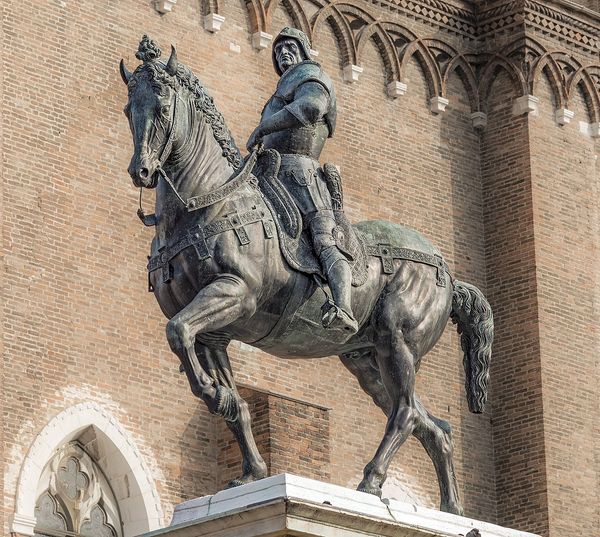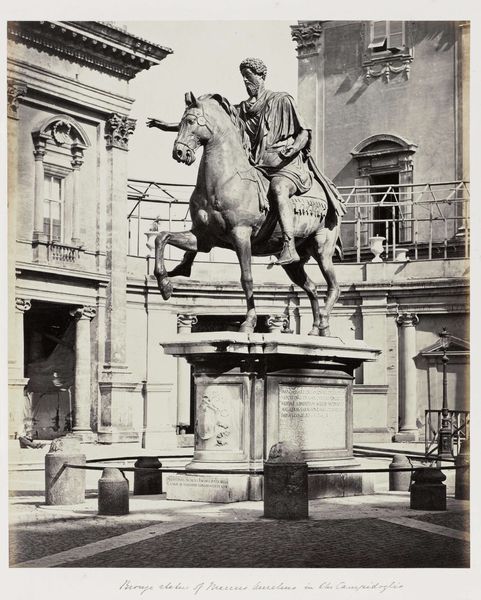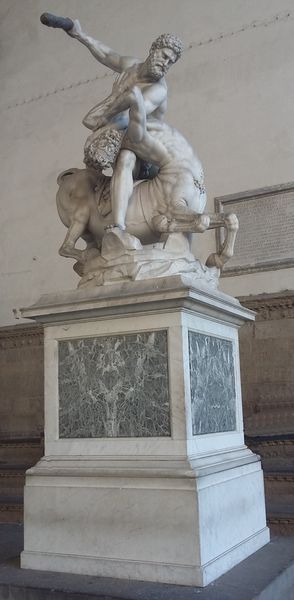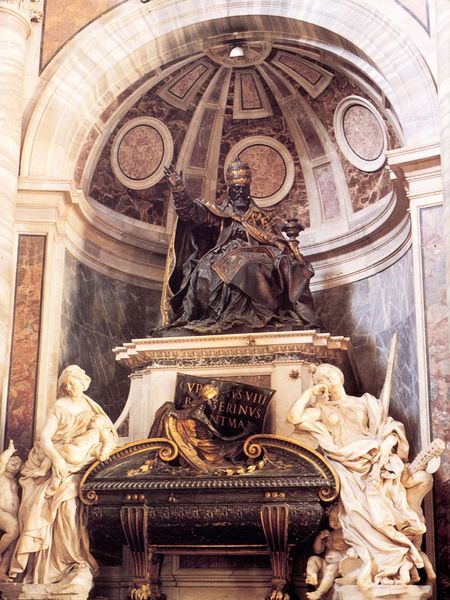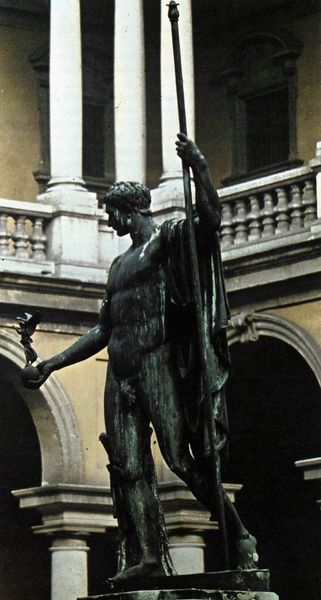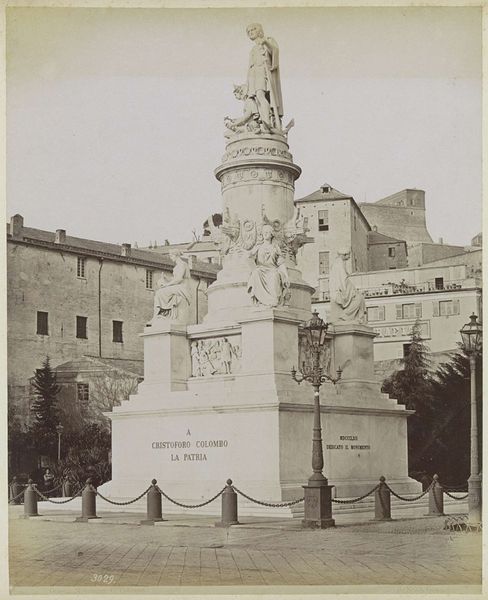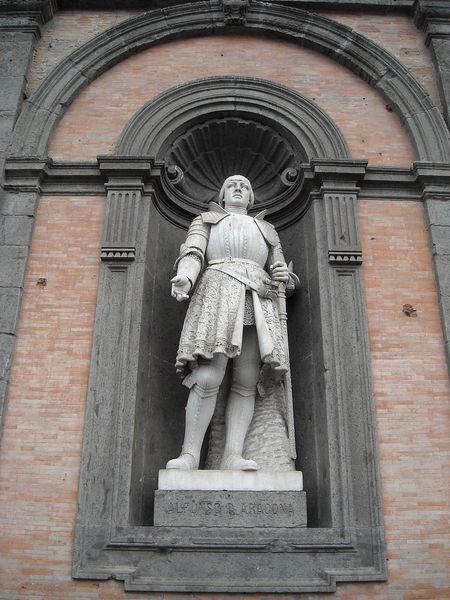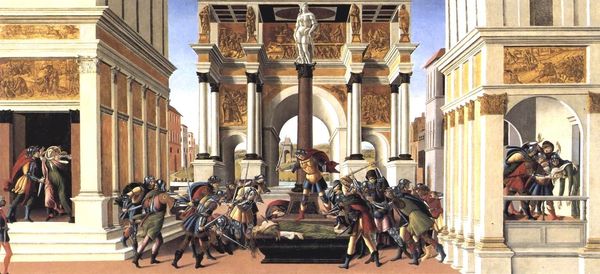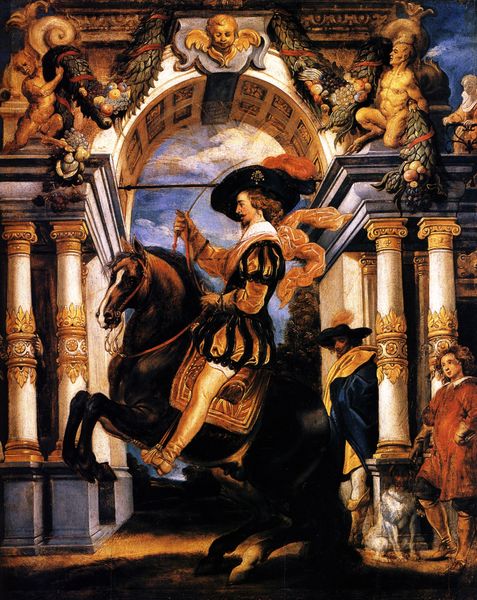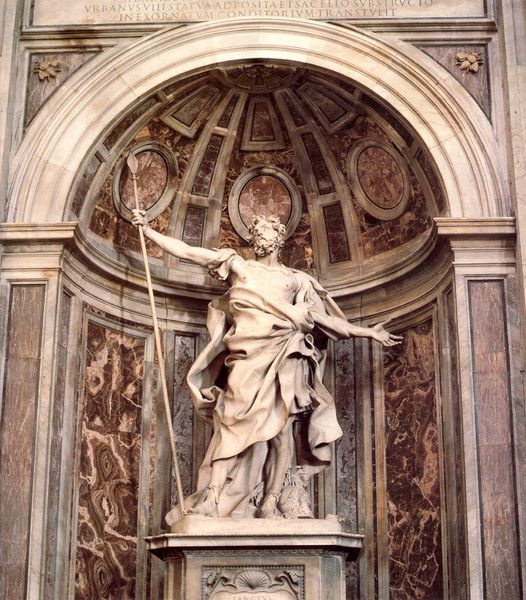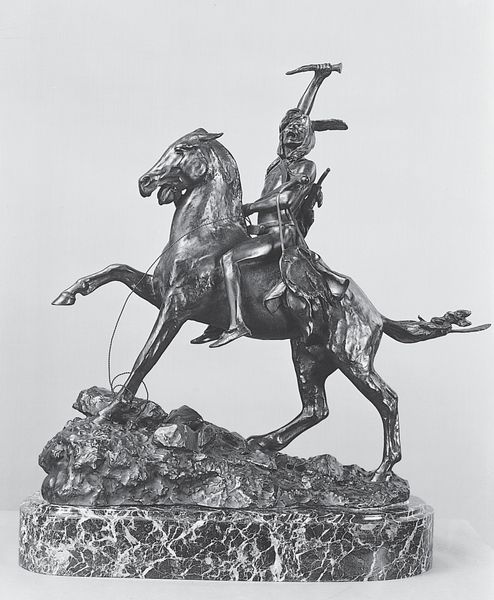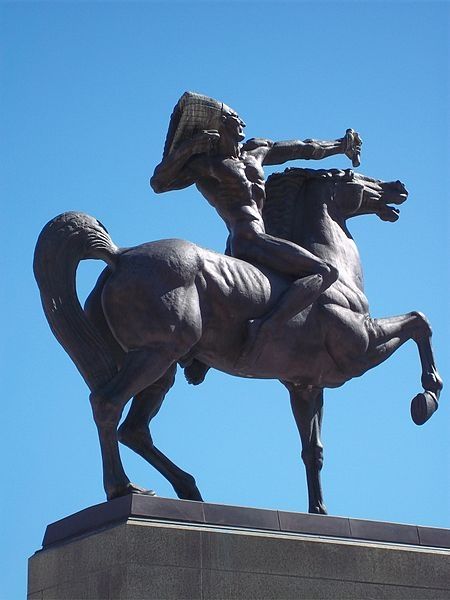
metal, bronze, public-art, sculpture
#
portrait
#
public art
#
statue
#
metal
#
sculpture
#
bronze
#
public-art
#
11_renaissance
#
sculpture
#
horse
#
italian-renaissance
Copyright: Public domain
This is Donatello's bronze equestrian statue of the condottiero Erasmo da Narni, nicknamed Gattamelata, made in Padua, Italy, likely in the 1440s or 50s. The sculpture is significant because it's one of the earliest Renaissance equestrian statues, reviving a classical Roman tradition of honorific portraits in bronze, meant to celebrate individual achievement. Gattamelata was a famous mercenary commander, and this public monument reflects a shift in Renaissance society towards valuing individual merit and military prowess, challenging traditional aristocratic notions of power and status. The statue itself draws on ancient Roman models, particularly the equestrian statue of Marcus Aurelius in Rome. But it also reflects the specific political context of Padua, which was then under Venetian control. By commissioning this statue, the Venetian authorities sought to legitimize their rule and project an image of power and stability. Understanding this artwork requires delving into the social history of Renaissance Italy, examining the rise of condottieri, the political dynamics of the Italian city-states, and the revival of classical culture. We can trace the patronage networks involved and the statue’s reception, all of which tell us about the complex interplay of art, power, and society in the Renaissance.
Comments
No comments
Be the first to comment and join the conversation on the ultimate creative platform.
